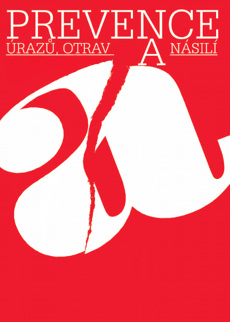ASOCIACE V ÚRAZOVOSTI ŽEN MEZI DVĚMA ŽIVOTNÍMI OBDOBÍMI – EPIDEMIOLOGICKÁ STUDIE
ASSOCIATION BETWEEN THE ACCIDENT RATE OF WOMEN IN THE PERIOD BEFORE AND AFTER THE CHILDBIRTH - AN EPIDEMIOLOGICAL STUDY
Lubomír Kukla 1,2, Marie Bouchalová 2
1Jihočeská univerzita v Českých Budějovicích, Zdravotně sociální fakulta, katedra klinických oborů; 2 Masarykova univerzita Brno, Lékařská fakulta, Výzkumné pracoviště preventivní a sociální pediatrie
Korespondenční autor: Lubomír Kukla (lubomir.kukla@tiscali.cz)
ISSN 1804-7858 (On-line)
Full verze:
Submitted:15. 2. 2008
Accepted: 2. 6. 2008
Published online: 15. 8. 2008
Summary
Participants in this epidemiological study were women living in Brno, mothers who were taking part in the international project ELSPAC (European Longitudinal Study of Pregnancy and Childhood). This study obtained data about injuries which happened in two periods of their lives, up to the middle of pregnancy (mean age of participants at that time 24.5 years) and during five years following the childbirth.
The data showed the number of injuries per 100 women and the distribution of injury morbidity classified according the cause of injury in the whole groups or in categories of mothers divided according their accident rate.
The data were obtained from information reported by respondents in a questionnaire. The initial interviews included 3848 women and the follow up interviews 2997 women; the real cohort represented 2429 women. While in the first period the accident rate of this longitudinal cohort was lower (p<0.025) than the injury incidence of the rest of women, in the second period both incidences did not differ significantly.
The mothers in the longitudinal cohort were divided into four categories according the number of injuries in the first period: no injury (757) – one injury (686) – two or three injuries (771) – four or more injuries (215 respondents) and the data about the number of their injuries during the five years following the childbirth were collected. There exists a close association between the injury incidences from both compared periods (p<0.000), which was characterized by injury incidence for the categories: 36.6 – 64.0 – 85.1 – 112.1 injuries per 100 persons. The relative risks for these categories were 1 – 1.76 – 2.34 – 3.09, respectively; our findings suggest that the general female population tends to maintain a stable level of injury morbidity.
Keywords: injury morbidity – longitudinal study – tendency for accident rate– cause of injuries – female population – productive age – incidence
Souhrn
Matky z brněnské části mezinárodní studie ELSPAC (Evropská longitudinální studie rodin a dětí) podaly zprávu o svých úrazech za dvě životní období: do poloviny těhotenství s očekávaným dítětem (v průměrném věku 24,5 let) a za dalších pět let po jeho porodu.
Tyto informace ukázaly, kolik úrazů připadalo na 100 žen a jaké bylo složení jejich úrazové morbidity podle příčin v celých souborech a v kategoriích matek s různě vysokou úrazovostí. V prvním termínu vyplnilo dotazníky 3 848, ve druhém 2 997 respondentek, z nich 2 429 dalo informace v obou termínech. Úrazovost této longitudinální kohorty se ve srovnání s ostatními matkami jevila v prvním období jako příznivější (p < 0,025), ve druhém jako stejná.
Pro matky z longitudinální kohorty rozdělené do čtyř kategorií podle počtů úrazů v prvním období (žádný úraz – jeden – dva a tři – čtyři a více případů se 757 – 686 – 771 – 215 respondentkami) byl zjištěn počet jejich úrazů po dalších pěti letech. Mezi úrazy z obou srovnávaných období byla přímá a těsná asociace (p < 0,000), kterou charakterizovaly kategoriální incidence 36,3 – 64,0 – 85,1 – 112,1 úrazů na 100 osob. Příslušná relativní rizika byla RR 1 – 1,76 – 2,34 – 3,09: v běžné ženské populaci se projevil dlouhodobý sklon držet se i nadále na podobné úrovni úrazové morbidity, jaká ji postihovala v minulosti.
Klíčová slova: úrazová morbidita – longitudinální studie – sklon k úrazovosti – příčiny úrazů – ženská populace – produktivní věk – incidence
Literatura
1. Brook, U., Heim, M.: Accidents among high school pupils in Israel: a recurrent disease? Patient Education and Counseling, 1997, 31: 237–242.
2. Bouchalová, M.: Vývoj během dětství a jeho ovlivnění. Brněnská longitudinální studie. Praha: Avicenum, 1987.
3. Korkeila, K., Suominen, S., Ahvenainen, J. et al.: Non-response and related factors in a nation-wide health survey. Eur J Epidemiol, 2001, 17: 991–999.
4. Kukla, L.: Psychosociální faktory v prevenci dětských úrazů. In: Grivna, M. a kol.: Dětské úrazy a možnosti jejich prevence. Praha: CÚP UK, 2003, s. 91–100.
5. O´Connor, T. G., Davies, L., Dunn, J., Golding, J. et al.: Distribution of accidents, injuries, and illnesses by family type. Pediatrics, 2000, 106, 5: 1–6.
6. Pool, G. V., Griswald, J. A., Thaggard, K., Rhodes, R. S.: Trauma is a reccurent disease. J. Trauma, 1989, 29: 940–947.
7. Reiner, D. S., Pastena, J. A., Swan, K. G. et al.: Trauma recidivism. Am. Surg, 1990, 56: 556–560.
8. Stang, A.: Nonresponse research – an underdeveloped field in epidemiology. Eur J Epidemiol, 2003, 18: 929–931.
9. Šplíchalová, A., Šlachtová, H., Fejtková, P., Tomášková, H.: Vliv socioekonomických faktorů na zdraví v epidemiologických studiích. Hygiena, 2007, 52, 2: 51–58.
10. Škodáček, I.: Psychické poruchy ve vztahu k nehodám a úrazům u dětí. In: Grivna, M. a kol.: Dětské úrazy a možnosti jejich prevence. Praha: CÚP UK, 2003, s. 82–90.
11. Wazana, A.: Are there injury-prone children? A critical review of literature. Can J Psychiatry, 1997, 42, 6: 602–610.
